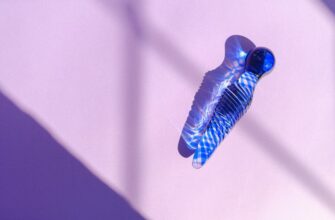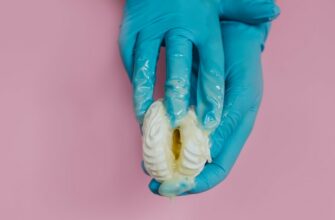
Normal sexual function is a biopsychosocial process. Any sexual dysfunction almost always has physical and psychological components and requires multidisciplinary, focused assessment and treatment. Such factors like aging, decreased testosterone levels, medical conditions, certain medications, and comorbid depressive illnesses can all contribute to sexual dysfunction.
Every man is forced to face such a problem as erectile dysfunction, namely the inability to achieve or maintain an excited state of the penis. This can happen from time to time, but when this phenomenon is regular, then there is already erectile dysfunction (ED), in other words — impotence. This disorder is one of the most common male sexual dysfunctions encountered in the clinical setting. Let's take a closer look at all the signs of impotence in the article.
Symptoms of erectile dysfunction
Symptoms of ED include persistent difficulty with:
- achieving an erection;
- maintaining an erection;
- decreased sex drive.
What is an erection and how does it work?
During sexual arousal, nerves send signals from everywhere to increase blood flow to spongy areas of the penis called the cavernous body. The blood vessels in the penis relax, allowing blood to be retained in the penis. It is thanks to the influx of blood that the penis begins to swell, increase and harden.
After orgasm, nerve impulses send signals to increase pressure in the blood vessels of the penis, which pushes excess blood out of the penis back into the rest of the bloodstream. It follows that any problems with the nerves or blood vessels in or around a man's penis can negatively affect the quality of an erection and the ability to hold it long enough for sexual activity.
Causes of erectile dysfunction
ED can have physical causes, psychological causes, or both. For example, if high blood pressure causes a man to have erection problems, then he becomes worried about it, and the anxiety itself further contributes to the development of erectile dysfunction.
It is important to note that ED can be a symptom of many different conditions health. Before treating ED, the cause must be determined and corrected.
Physical causes
- alcoholism or drug addiction;
- diseases of the blood vessels;
- clogged blood vessels (atherosclerosis);
- diabetes mellitus;
- heart disease;
- high blood pressure;
- high cholesterol;
- hormonal problems (such as low testosterone or thyroid levels);
- kidney disease;

- metabolic syndrome — a condition that includes high blood pressure, high insulin levels, fat around waist;
- multiple sclerosis;
- obesity;
- Parkinson's disease;
- Peyronie's disease (scar tissue inside the penis);
- prescription drugs (more than 200 drugs can cause ED)
- prostate enlargement
- pelvic radiotherapy
- sleep disorders;
- Surgeries or injuries that affect the spinal cord or pelvic area;
- tobacco use;
- treatment of prostate cancer or an enlarged prostate;
- venous leak (leak from a large vein in the penis).
Psychological causes of ED may include:
- anxiety;
- depression;
- fear of intimacy;
- guilt;
- relationship problems;
- stress.

Drugs that can cause ED
There are over 200 prescription drugs that can cause erectile dysfunction.Here are a few examples .
- Antidepressants, including monoamine oxidase inhibitors (MAOIs), selective serotonin reuptake inhibitors (SSRIs), and tricyclic antidepressants.
- Medicines that act on the central nervous system
- Medicines that control high blood pressure.
- Heart drugs such as digoxin.
- Hormonal preparations.
- Opioid painkillers.
- Drugs for the treatment of the prostate.
- A number of oncology drugs, including chemotherapeutic agents.
- Diuretics.
- In case of peptic ulcer, the drug Cimetidine.
Can cycling cause ED?
It is rumored that men who cycle frequently are at greater risk of developing erectile dysfunction, infertility or prostate cancer. Research in this area is limited and mixed, but one study found that while cycling does not increase the chance of developing ED or infertility, it may increase the risk of prostate cancer.

Other studies have shown that frequent cycling can damage the perineum, the area between the penis and anus. This area is filled with veins and the arteries that supply blood to the penis.An inflamed or damaged perineum can lead to ED.
Risk factors for ED
As men age, they become more prone to developing sexual dysfunction. In addition to age, additional risk factors for erectile dysfunction include:
- Overweight (obesity).
- Medical procedures such as prostate surgery or radiation therapy for cancer.
- Abuse of drugs and alcohol, tobacco.
- Injuries, especially if they damage the nerves or arteries responsible for erections.
- Heart disease or diabetes.
- Medications, including antidepressants, antihistamines, and strong pain relievers.
- Psychological conditions such as anxiety, depression or stress.
- Prostate disease and prostate cancer.

Prostate disease and prostate cancer generally do not contribute to erectile dysfunction on their own. However, treating these problems, especially with things like radiation or prostate surgery, can lead to this disorder.
ED Complications
Naturally, there are many complications associated with erectile dysfunction, including:
- An unsatisfactory sex life.
- Low self-esteem.
- Inability to conceive.
- Relationship problems.
- Stress or anxiety.
Preventing ED
Fortunately, there are a number of things a man must do to prevent the risk of developing erectile dysfunction. Ways to prevent ED include:
- Regular exercise.
- Rejection of bad habits.
- Stress reduction.
- Regular visits to the urologist and andrologist.
- A responsible approach to any existing chronic diseases.
Kegel Exercises for ED
From medications like sildenafil (Viagra) to psychological treatments for ED, there are many options to reverse the effects of this disorder and improve male sexual performance.

There is also an aspect of ED treatment that is less visible than medication: exercise. Like other muscle groups in the body, the pelvic floor muscles that surround the male penis can be trained and strengthened, potentially improving a man's sexual performance and erection quality.
While Kegel exercises are often associated with women struggling with incontinence or regaining muscle tone after childbirth, Kegel exercises can also benefit men.
These exercises strengthen the pelvic floor and can help treat erectile dysfunction. They are also aimed at strengthening the bulbocavernosus muscle, which has three important functions: at the time of excitation, the muscle does not interfere with the flow of blood to the penis, it pushes sperm at the time of ejaculation, and it helps to empty the urethra after urination. To perform Kegel exercises, you should:
- Define the pelvic floor muscles by stopping the urine in the middle of the stream. It is these muscles that have been contracted that must be engaged during Kegel exercises.
- You can perform Kegel exercises while sitting or standing, including lying down with your knees raised. It is necessary to squeeze the desired muscles of the pelvic floor and hold them in this state for 5 seconds, then relax. It is advisable to repeat this exercise 15 to 25 times, in the morning, afternoon and evening.
- You can also alternate muscle contractions from long to short. It is important to monitor breathing, while the gluteal and abdominal muscles should remain at rest. Be sure to relax after each count to five.
- Another very useful Kegel exercise for men — it is required to contract the muscles of the anus, as if one would like to stop the urge to defecate. Hold your breath for 5-8 seconds, then completely relax the muscles.

Kegel exercises for men not only help with erectile dysfunction, but also prevent urinary incontinence, positively affect bowel function and prevent urine leakage after urination Improvement and relief of symptoms will be noticeable after 5-6 weeks of regular exercise
Diagnosis of ED
In order to diagnose sexual dysfunction, sometimes it is enough just to talk with a doctor about the symptoms and medical history. However, erection problems may be a symptom of a chronic disease of a completely different nature, and in connection with this, additional examinations may be required:
- Blood tests for diabetes, heart disease, low testosterone or other diseases.
- Physical examination of the condition of the penis and testicles, including testing of nerve impulses for sensitivity.
- A psychological test to detect things like anxiety or depression.
- Ultrasound to check for blood flow problems.
- Urine test.
ED treatment
Taking into account the individual characteristics of the patient and the causal nature of the sexual disorder, the accumulated experience in the field of psychology and urology allows choosing the right treatment. Both pharmacology and surgery can be involved here.

- Psychotherapy — allows you to remove the blocker that prevents a healthy man from having an active sex life. find the cause, which often has its roots in past bad sexual experiences.
- Oral drugs — increase the action of nitric oxide, which relaxes the muscles of the penis, thereby allowing it to supply more blood and cause an erection. Erection drugs do not produce immediate results — it still requires sexual stimulation to achieve it. Some drugs for erectile dysfunction (for example, Viagra) have a short-term effect and are taken 3-4 hours before the onset of sexual intercourse, while others (for example, Cialis) are taken daily so that at any time a man can please his partner with a good erection. Without the appointment of a specialist, you cannot take drugs for this purpose, since they all have a number of adverse reactions that can cause serious harm to the body.
- Physiotherapy — improves blood flow in the pelvis, has a positive effect on the walls of the vessels of the penis, which has a beneficial effect on the process of excitation. If the sexual disorder does not have a physical pathology, the massage method in combination with complex treatment will improve the quality of erection. Laser and LED irradiation is also used if the cause of erectile dysfunction is vascular pathology. Such therapy softens the walls of blood vessels and increases blood supply.

- Urethral suppositories — These are tiny suppositories that are placed inside the urethra using a special applicator. An erection occurs within 10 minutes and lasts from 30 to 60 minutes. This method has side effects: minor bleeding in the urethra, pain and fibrous tissue formation inside the penis.
- Surgery — is the last and radical method of treatment when other options are powerless. A prosthesis is installed in the form of inflatable or bendable rods in the sides of the penis in order to be able to create an erection manually.
For more useful information about erection pills, click here.
erectile dysfunction, potency disorder, impotence








